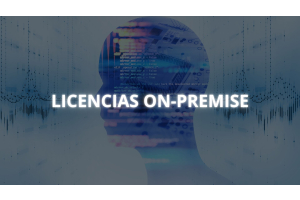Microsoft Project 2016 or 2019 - What's the difference?
What is Microsoft Project?
Microsoft Project, developed and sold by Microsoft, is the most popular and most downloaded project management software on the market. It provides tools that project management teams can use to make projects a success with ease.
It is designed to support the realisation of projects in numerous sectors and fields such as construction, public administration, pharmaceuticals, manufacturing, retail, healthcare and financial services. However, Microsoft Project is not part of the Microsoft Office suite and must therefore be purchased or downloaded separately.
Microsoft Project is available in two editions: Standard and Professional. The choice between the two depends on the specific needs of the team. It is considered one of the most widely used project management software on the market because it offers project managers a wide range of features.
This includes planning meetings, monitoring workload, recording progress, monitoring finances, allocating tasks, setting resources/targets and developing plans.
Microsoft has already released two versions of Project: Microsoft Project 2016 and Microsoft Project 2019. The first included updates to Project Online, Project Pro for Office 365 and Project Professional. It also included some of the most requested features such as resource capacity planning and resource management. After a few years, it was then updated to Microsoft Project 2019, which still includes some of the old, desirable features of its predecessor, but also a number of new features.
Microsoft Project 2016
With the introduction of Microsoft Project 2016, project managers were given the opportunity to use software that reduces their workload. This version includes a number of new features and enhancements designed to increase team productivity when using the tool.
Microsoft 2016 improvements since 2013
On the one hand, Microsoft Project 2016 has put an end to the problem of getting enough resources for projects by allowing users to systematically request a resource. Once the resource request is approved, users can lock the resource to ensure it is available.
The request is easy to make and the manager can approve or reject it just as easily. Managers of other projects are also notified if they try to overbook a blocked resource.
Another strength of Microsoft Project 2016 is the ability for the resource manager to collaborate with the project manager. The tool has created an area where you can view all contract proposals and decide whether to approve or reject them. Here you also have the possibility to understand the utilisation of your resources.
This software also has “capacity heat maps“, which are an important tool for managing a team's resources. It has a number of new intuitive reports that allow users to see at a glance how the team's resources are being used. The heat map shows how many resources are being used to avoid over- or under-utilisation.
One of the basic tasks of a project manager is to communicate the project plan. And this is best done with a timeline instead of a GANTT chart. In the Microsoft Project 2016 software, the timeline function has been extended to include several timelines with different start and end dates.
The Tell Me button is the key to where users can find certain functions. This saves a lot of time because users only have to click on the answer and Tell Me takes care of it.
Stick with Microsoft Project 2016 if you...
Are satisfied with the conveniences offered by the 2016 version. It is easy to get stuck with it and not switch to the newer version, Microsoft Project 2019. There are many differences between the two versions, but if you are using Project Professional 2013, you should stick with it.
This is because the later version is not compatible with this tool. In addition, there is no direct upgrade from Project Server 2013 to 2019, i.e. users must first upgrade to the 2016 version. The Project Server Interface or PSI Extension scenarios are no longer supported in the 2019 version.
In addition, the Resource Plan view, which is useful for managing a team's resources, will no longer be available in the 2019 version.
Microsoft Project 2019
Microsoft Project 2019 is packed with new and improved features to enhance project delivery and selection. Managers now have the right tools to use the right schedule and utilise budget and resources.
Improvements 2019 compared to 2016
This updated version of MS Project allows users to get started quickly using the home screen. Microsoft Project 2019 guides users through the software's features, such as creating a timeline and linking tasks.
One of the improved functions experimented with in this version is task linking. Here, users no longer have to remember the ID of the task they want to link to. Users simply select a cell in the "Predecessor" column and click on the down arrow, where a list of all tasks in a project is displayed. Tasks can also be selected from the drop-down list in the Successor column.
In project communication, timelines can now be labelled and task progress is now displayed in the tasks themselves. In addition, the user can add a team of several collaborators and has 450 custom fields and look-up tables.
Microsoft Project 2019 offers enhanced features compared to its predecessor Microsoft Project 2016. It offers new and useful functions that enable efficient management of projects and portfolios. It also allows for better long-term savings than older local versions.
As project management software, the Microsoft Project 2019 version allows users to use familiar tools such as Gantt charts to create schedules and minimise learning curve.
Should teams make the switch to Microsoft Project 2019?
Migrating from Microsoft Project 2016 to Microsoft Project 2019 is a decision that managers and teams need to think about. However, it is useful to know that the features added in the Microsoft Project 2019 version are better than the features that will not be included in the version.
In general, one can say that the advantages outweigh the disadvantages. But the decision is of course in the hands of the users. After all, projects have unique requirements and only the teams that manage them know which software meets their needs.
If you want to buy Microsoft Project 2019, click here and if you just want to download it, click Microsoft Project 2019 Download.
If you want to buy Microsoft Project 2016, click here and if you just want to download it, click Microsoft Project 2016 Download.
Were we able to answer your questions?
If you have any questions, please write us a comment here or give us a call.
Greetings,
Your Licendi Team




